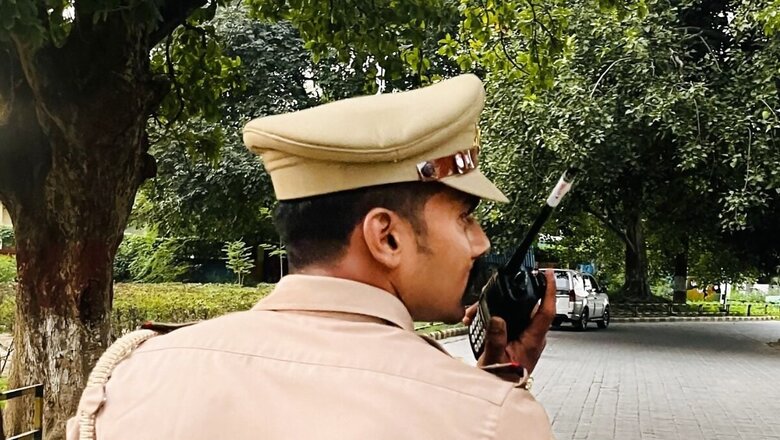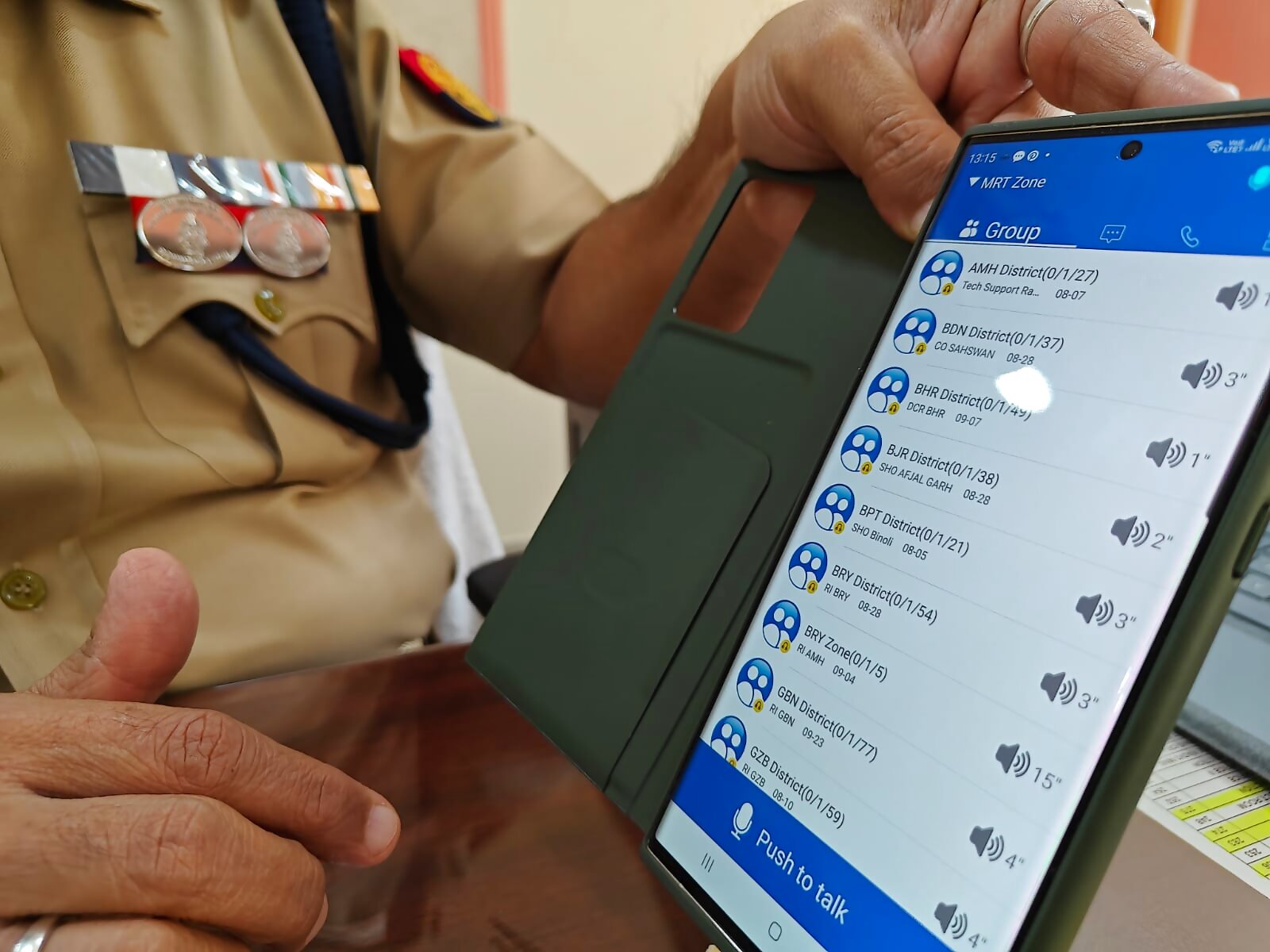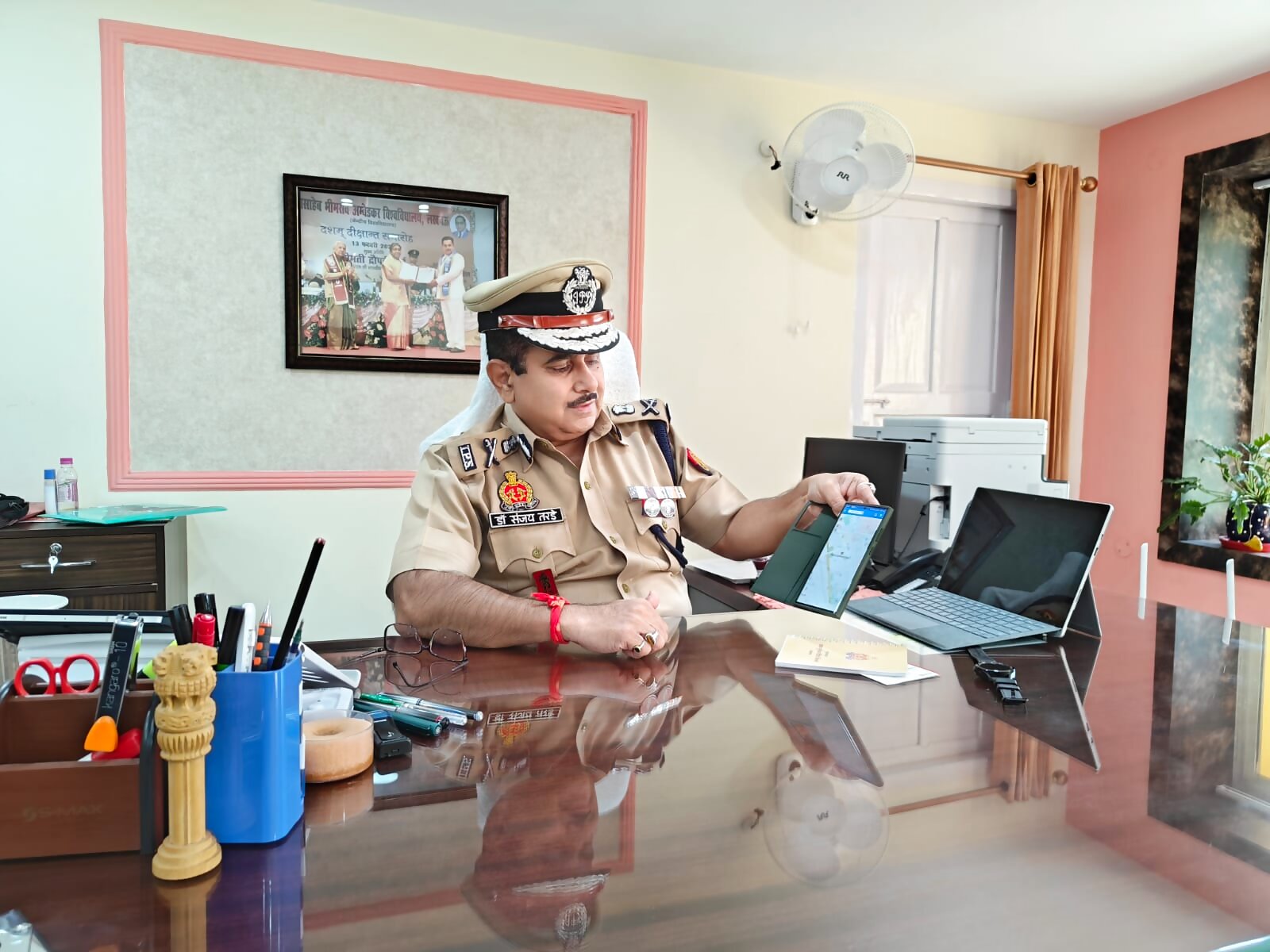Sunday Special | Ditching Age-Old Walkie-Talkies, UP Police Makes Technological Leap to Reduce Crime

views
The Uttar Pradesh Police is all set for a technological transformation for better policing and minimising crime graph in the state, aligning with the government’s zero-tolerance policy towards criminals.
The police are set to replace the existing age-old traditional high frequency (HF) and very high frequency (VHF) wireless walkie-talkies with the highly efficient and affordable Push to Talk Over Cellular (POC) system that would not only help them communicate quickly over long distance (pan-UP) but also track live locations and initiate group or individual communications or video calls.
The new system, which is used by the police of France and Finland, is likely to be introduced in Uttar Pradesh after the 2024 Lok Sabha Elections, the officials in know of the development said. Chief Minister Yogi Adityanath is likely to launch the new communication technique.
Barrier-free Communication
“Communication is the most important aspect of policing. And this new system ensures barrier-free communication, which, so far, was not possible with HF\VHF based walkie-talkie wireless sets. This new system that has already cleared several field tests is likely to be introduced in 2024,” said Sanjay M Tarade, director-general of police (Telecom), UP.

How Does POC Technology Work?
How does this Push-to-talk Over Cellular (POC) technology work? Prior, answering this question, Tarade said one has to understand about the needs of communication in present times. “Policing in the present scenario, when criminals are going hi-tech and cybercrime is on the rise, is the toughest job. Hence, there is a need for an effective communication system in order to pass on the message to others quickly and effectively. Secondly, other than communication, there are often requirements of group communication or personal communication, location tracking and even video calling in policing,” Tarade told News18.
HF\VHF Communication has its Limitations
All this was not possible on the existing HF\VHF that is also called a narrowband communication system that functions on the licenced frequency of 30 MHZ to 300 MHZ. Tarade said, “Due to these shortcomings, a need to have a seamless communication system was felt. POC, however, has all the features that made it an ideal replacement to the VH/VHF-based communication system.”

He further said the POC communication is highly efficient and affordable that the existing two-way radio. “At present, the VH/VHF-based walkie-talkie can facilitate communication up to 2 km. And the radio setup at the station can facilitate communication up to 11km at the max. Though there are ways to enhance the range by increasing the height of the antenna or by installing the repeaters which may increase a little range but yield heavy costing. Whereas the POC, which is a mobile application that transforms the mobile phones into wireless sets, can communicate seamlessly across UP. This is the most important feature of POC,” he explained.
POC Enables User to Do Geo-Fencing
Other than this, the POC system comes with the several other new-age features that include text messaging, live location tracking, group calling or individual calling, Geo fencing, video calls and others. “Through this system, the top officials can communicate easily to the group, can get to view any live operation and interact with a particular fleet and can restrict the message of sensitive nature to a set of cops instead of passing it on to all. These features again make it the most viable replacement to existing radio systems,” he further explained.
300 Milliseconds to Connect a Call
When there are mobile phones to communicate, why was there a need for this new POC system? Mobile phones take almost 8 to 10 seconds to connect whereas POC connects in just 300 milliseconds. “The same for making video calls. Also, calling hundreds and thousands of cops in one go is almost impossible and hence a system was needed that can do it all with ease,” he added.
Officials also said POC’s first field test was carried out during the recent ‘Kawar Yatra’ between Meerut and Bareilly. The test was successful,” said officials. Not only this, the UP Police used POC during a recent MotoGP race held in Greater Noida and the test remained a successful one.
When Elephants Used to Carry Wireless System
After carrying out a series of successful field tests, the UP Police is set to introduce the POC system. Some senior officials said the introduction of the new system would phase out the traditional wireless systems that are part of its “rich past”.
“It was in 1938, when UP, then known as United Province, became the first state in India to use the wireless technology communication system. The three wireless systems, weighing in tons were placed on the back of three elephants and it was used to manage the law and order situation during ‘Kumbh Mela’ in Haridwar in 1938. These mobile radios were linked to the Mela control room,” a senior police officer said, while highlighting the history of the UP police’s wireless communication systems. The officer said in 1941, the three status HF radio stations — in Sitapur, Lucknow and Gorakhpur — were established. This was the first police communication network in India.
Radio Stations during Quit India Movement
Officers said radio played an important role in handling law and order situation during Quit India Movement in 1942 when static radio stations were hastily installed in Prayagraj, Kanpur and Varanasi districts. Besides, one mobile radio station was established in Ballia. In 1943, UP Police Radio Organisation was formed with the name of ‘Police Wireless Telegraphy Service’ under the supervision of EW Hunt, Superintended of Police (SP), Imperial Police, Sitapur.
In 1948, the headquarters of the Police radio was shifted to Lucknow after which all district headquarters were linked with state wireless telegraphy in Lucknow using HF radio. However, after 1950, the use of wireless sets by UP Police became a regular affair. Officials said a special network was established to keep a check on the dacoits and to carry out dacoit operations in Chambals and Agra.
In 1958, then Chief Minister of UP Sampurnanand laid the foundation of the UP Police Radio Headquarters of UP Police, Lucknow. By 1960s’ the wireless services were adopted by city police to carry out policing in an effective manner. Whereas in 1987, the range repeater systems came into force which had the capability to increase the range of the wireless up to some extent. However, all previous versions of radio were replaced by Radiotelephony Communication, the 4th generation microprocessor based featured radio sets which further enhanced the communication system.




















Comments
0 comment